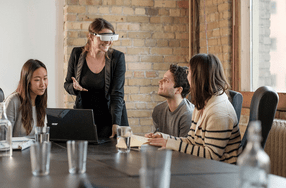More than 250 million people lack the gift of sight. While for the most of us even imagining what it is like to live in complete darkness is impossible, some have found a way to make a commitment that’s truly amazing—to end vision loss by 2020. Luckily, we live in the era of wearable technology. eSight originates in Toronto, Canada, where one successful engineer—Conrad Lewis— with two legally blind sisters, wanted to use his skills to come up with a solution to their blindness. It took him seven years and investments of tens of millions of dollars to develop the technology and in 2013, managed to release two beta versions of the glasses that would revolutionize the world of the legally blind. In 2017, the company launched eSight 3, a much sleeker and lighter version of the headset, which also has improved battery life and image quality. How does it work? The gadget is equipped with two depth sensors and a high speed, high resolution camera positioned in the middle of the eSight glasses that captures whatever it is that the user is looking at in real time. It also has a powerful computer, which instantly processes the high definition video and displays it on two OLED screens in front of the user’s eyes, using specific optics. The gizmo’s proprietary algorithms enhance the video feed, which offers clarity without perceptible latency or delay. This allows the user to auto-focus between short-range vision to long-range vision. A special feature—the patented Bioptic Tilt capability—enables users to adjust the eyewear to the precise position they choose and also maximize the outer peripheral vision, which people with low vision still have functional. The feature, combined with imperceptible short latency, keeps the user’s balance in check, thus no nausea...

